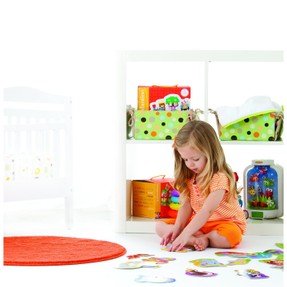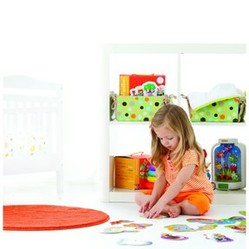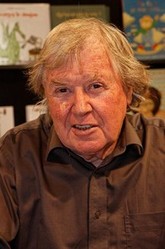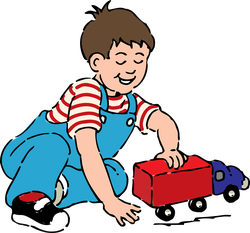 The next step in jigsaw puzzles are the ones with two classic style pieces. This type of jigsaw puzzle is for older toddlers (nearly preschoolers) who have had lots of playtime with the first and second toddler puzzle styles.
The next step in jigsaw puzzles are the ones with two classic style pieces. This type of jigsaw puzzle is for older toddlers (nearly preschoolers) who have had lots of playtime with the first and second toddler puzzle styles.
So why are these jigsaw puzzles hard for toddlers?
1. They are in the classic style. So they have flat pieces that don't have knobs. This means they are trickier to fit together.
2. There is no jigsaw puzzle board for the pieces to fit into. This means there are no hints your toddler can use. (That shaped space in jigsaw puzzle boards help guide your toddler into working out what piece goes where. They are also the easiest for coordination than putting to classic jigsaw puzzle pieces together.) All the first and second style puzzle have puzzles boards to make them good for young toddlers.
3. These puzzles need more logical thinking. Rather than needing to think "What shape do I need to fit into this hole?" your toddler needs to think "What does the tail of a monkey look like?" or "What sort of head goes with this tail?". This is more advanced problem solving.
So when picking this type of puzzle look for ones like the two I've featured here. They are both collections of easy puzzles that only have two puzzle pieces that your toddler needs to fit together. Like a monkey head with monkey tail.


 When we think of a jigsaw puzzle we think of ones with classic jigsaw pieces. But these flat pieces can be tricky to pick up and move into place for little kids.
When we think of a jigsaw puzzle we think of ones with classic jigsaw pieces. But these flat pieces can be tricky to pick up and move into place for little kids.





 The next step in jigsaw puzzles are the ones with two classic style pieces. This type of jigsaw puzzle is for older toddlers (nearly preschoolers) who have had lots of playtime with the first and second toddler puzzle styles.
The next step in jigsaw puzzles are the ones with two classic style pieces. This type of jigsaw puzzle is for older toddlers (nearly preschoolers) who have had lots of playtime with the first and second toddler puzzle styles. 





 Monkey Birthday Party Favorson 01/24/2013
Monkey Birthday Party Favorson 01/24/2013
 Butterfly Birthday Party Favorson 02/02/2013
Butterfly Birthday Party Favorson 02/02/2013
 Monster High Birthday Party Favorson 01/24/2013
Monster High Birthday Party Favorson 01/24/2013
 Basketball Party Favors for Girlson 01/30/2013
Basketball Party Favors for Girlson 01/30/2013



Comments